If you have whole coffee beans on your counter but no coffee grinder in sight, this article is for you. It shows you how to grind coffee beans without a grinder, so keep reading to find out more!
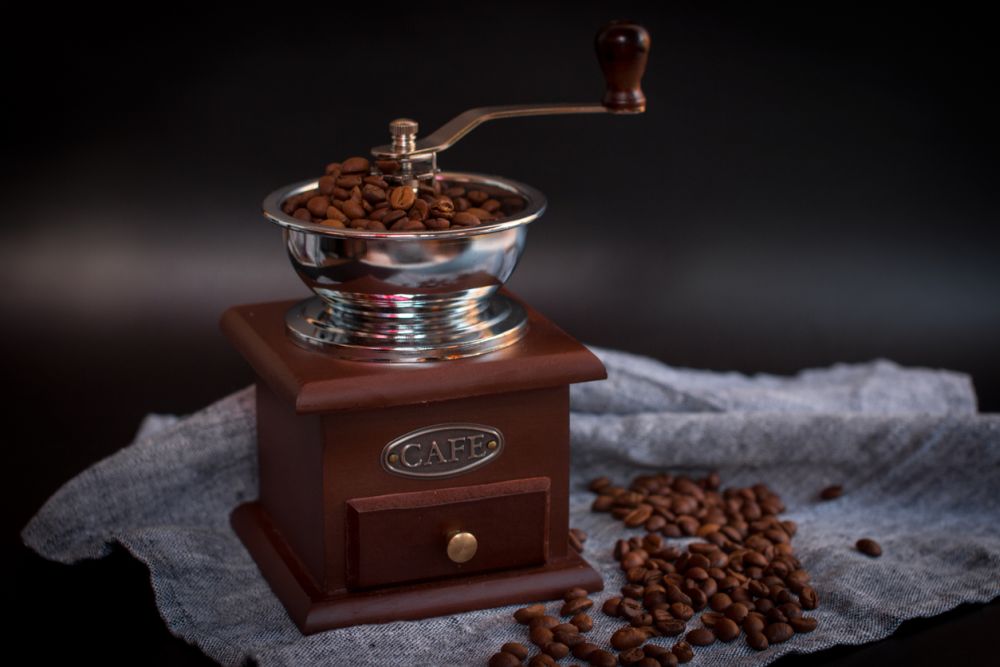
Those with a soft spot for fresh coffee know that the best way to enjoy it is to grind the beans right before brewing them. But what happens when you have a bag full of coffee beans but no coffee grinder?
While grinding coffee without a coffee grinder may seem like a daunting task, you can use several methods for this. And this article reviews 11 different ways to grind coffee beans without a grinder using electrical and manual solutions.
Table of Contents
- How to grind coffee beans without a grinder using 4 electrical solutions
- How to grind coffee beans without a frinder using 7 manual solutions
- FAQ
- Closing thoughts
Let’s start with discovering four electrical methods to grind coffee beans without a grinder.
How to Grind Coffee Beans Without a Grinder Using 4 Electrical Solutions
The average kitchen is filled will all kinds of electrical appliances you can use to grind coffee. And just like with your typical electric grinder, all you need is to press a button or flip a switch to get the coffee ready.
This section reviews the four best electrical kitchen appliances that you can use to grind coffee beans without a grinder. These are a food processor, spice grinder, regular blender, and immersion blender. They are excellent for preparing small batches of coffee grounds but won’t be as effective for larger quantities.
Let’s start by checking out the food processor solution.
1. Food Processor
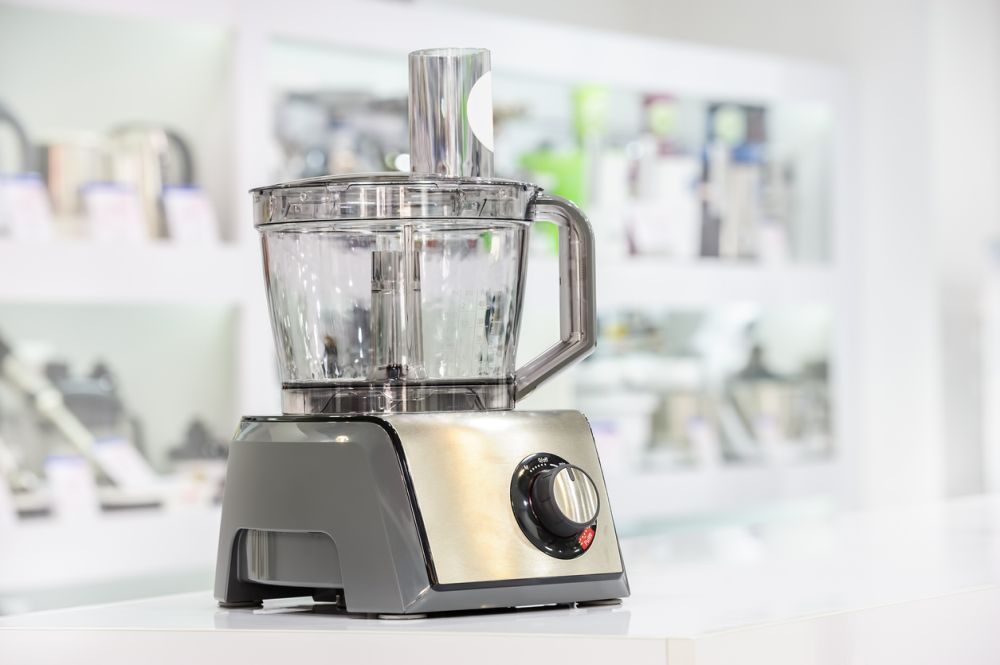
- Grind size: fine, medium
The food processor is your best option for grinding coffee without a grinder when it comes to speed, power, and effectiveness.
Here’s what you should keep in mind when using a food processor for coffee:
- There’s a small space between the blades and the bottom of the food processor’s container. So, to keep the coffee grounds in contact with the spinning blades for as long as possible, try holding the food processor slightly tilted while it runs.
- If you want a uniform grind, don’t run the food processor continuously at the highest speed setting. Instead, set the appliance to pulse mode. If you don’t have that feature, just turn it on and off a few times.
- Food processors aren’t good at making tiny batches since you must add just enough coffee grounds to cover the upper-most part of the blades. If you don’t, the beans at the bottom will be ground very coarsely. Another way to avoid this issue is to often shake the appliance to make the finer grounds go to the bottom.
- Food processors eventually heat up, especially when grinding something as hard as coffee beans. This will make the oils in the coffee beans stick to pretty much everything, including the processor’s walls and blade, and the coffee grounds may end up clumping. The amount of oil released depends on how long you run the machine and the coffee’s roast (darker roast is significantly oilier).
If you don’t have an electrical food processor, we suggest Hamilton Beach 70730 Bowl Scraper Food Processor since it’s amazing!
In the next section, check out the spice grinder solution.
2. Spice Grinder
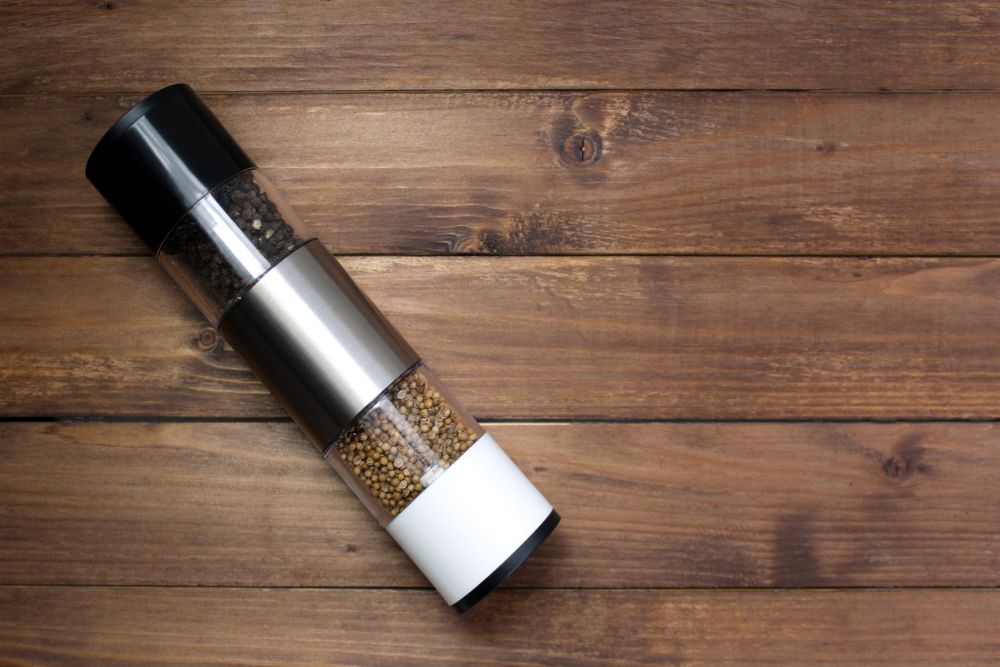
- Grind size: fine
An electrical spice grinder is just as powerful and fast as a food processor for grinding coffee beans without a grinder. And you can use the same tricks as in the previous section for obtaining a uniform grind size.
Here’s what you should know about using a spice grinder on coffee:
- A spice grinder is primarily designed for spices. So, if regularly used, the spice grinder might fail to simultaneously process as many coffee beans as the food processor due to the strain on the motor.
- Unlike food processors, certain spice grinders have a setting for adjusting the grind size. So you can use this setting to specify the desired grind size of your coffee beans.
- The inside of the electrical spice grinder may heat up and become oily from the coffee. In this case, you can switch to a manual spice grinder. A manual spice grinder is slower than an electrical one and requires elbow grease, but it gives you more control over the resulting coffee.
- If you continue using the spice grinder for spices, the taste and aroma of the spices will linger inside the appliance, which can be off-putting when grinding coffee. To minimize the spice lingering flavors, run a couple of water-soaked coffee beans through the spice grinder before grinding coffee.
If you don’t already have an electrical spice grinder, we recommend Hamilton Beach Fresh Grind Electric Grinder. Or, if you prefer a manual spice grinder, go with Bazaar Anatolia Spice Grinder.
In the next section, let’s check out the standard blender solution.
3. Standard Blender

- Grind size: medium, coarse
It’s possible to use a standard blender for grinding coffee beans without a grinder, but it should be the last resort, and here’s why.
One problem is that, although it gets the job done, this kitchen appliance delivers coffee with inconsistent grind size, so you’ll end up with something that resembles dust more than actual coffee grounds. It’s because blenders work by propelling the blades at the bottom of the jar in a whirlwind motion until pulverizing everything inside.
Since coffee beans are significantly harder than most fruits and vegetables, they won’t evenly hit all the blades. So part of the coffee beans will remain whole, unground, while others will become powder.
A second problem is that the blades of a blender wear out significantly faster than those of food processors, particularly since coffee beans are harder to cut than other foods.
A third problem is that blenders generate heat and, just like the case of the food processor or electric spice grinder, you’ll end up with a lot of oil that needs regular cleaning.
If your kitchen is missing a blender, check out Hamilton Beach 58148A Blender. It’s fast and powerful with overwhelmingly positive reviews.
In the next section, let’s check out the immersion blender solution.
4. Immersion Blender
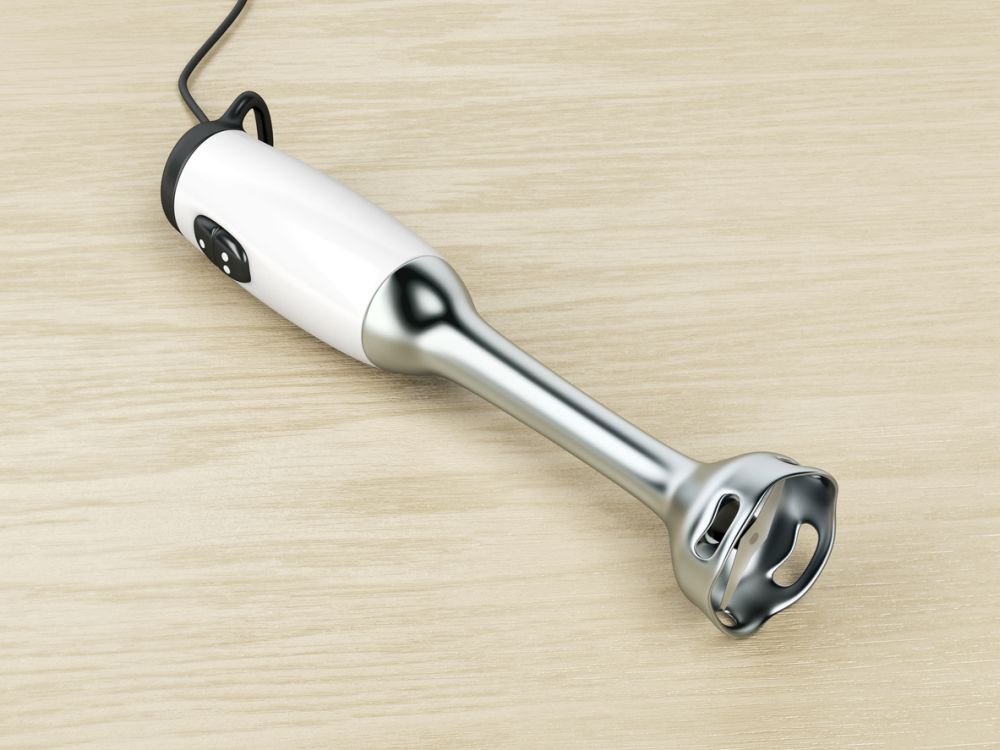
- Grind size: fine
An immersion blender provides a simple way to grind coffee beans without a grinder. You can finely grind coffee beans by just dipping the blending wand into them. But the resulting grind size might not be as consistent as with other coffee grinding solutions.
Immersion blenders are excellent alternatives to electric spice grinders and food processors when you need more control over the final result.
The best part about using an immersion blender is that it’s really convenient to use. Since it’s battery-powered, you don’t have to plug in the device or make extra room on your kitchen countertop. So an immersion blender is a great solution for people living in small apartments with limited storage space.
To grind coffee beans using an immersion blender, place the beans in a tall narrow glass that fits the blender wand of your immersion blender, and press a button to start blending.
On the downside, the immersion blender inherits the drawbacks of the standard blender, as we discussed in the previous section. Specifically, you’ll have to deal with heat buildup and oily dishes. Plus, while blending, you must ensure that no rogue coffee beans jump out of the glass, especially in your eyes.
If you need to buy an immersion blender, have a look at the Mueller Ultra-Stick 500 since it’s arguably the best option in its price range.
In the next section, let’s find out how to grind coffee beans without a grinder by using manual methods.
How to Grind Coffee Beans Without a Grinder Using 7 Manual Solutions
Many people see coffee-making as an art form that requires the utmost precision, care, and attention. If you’re such a person, the following methods might be more to your liking since you have a hands-on approach to the grinding process: mortar and pestle, garlic press, manual meat mincer, knife and chopping board, rolling pin and ziploc bag, hammer or meat tenderizer and ziploc bag, or frying pan and ziploc bag.
Let’s start by checking out the mortar and pestle solution.
1. Mortar and Pestle
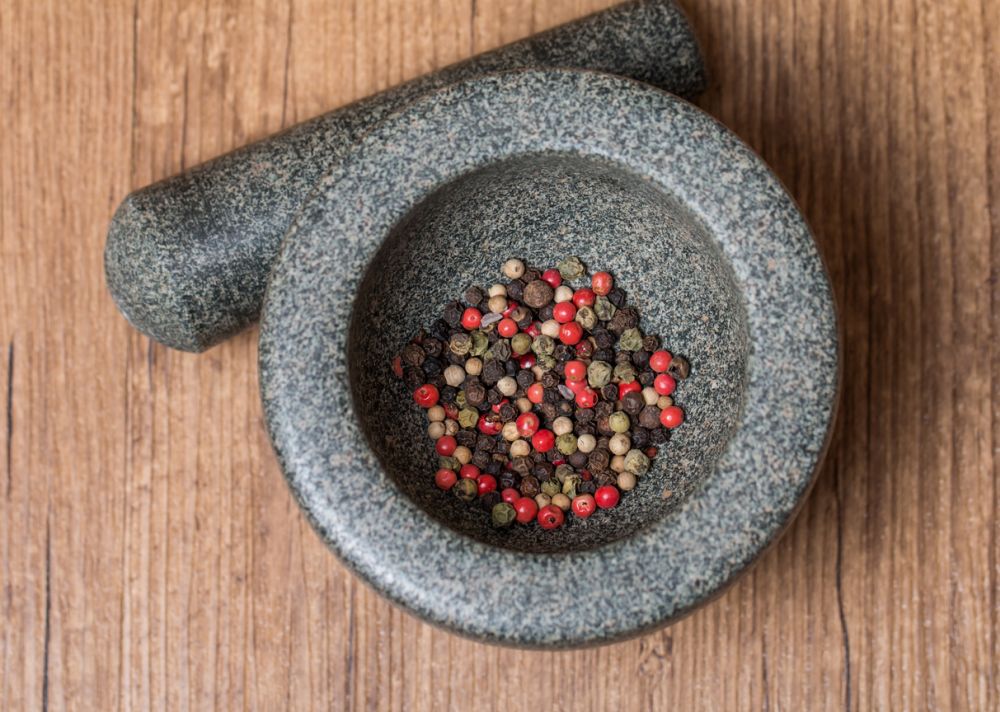
- Grind size: fine, medium, coarse
The traditional mortar and pestle are two of the oldest tools in human history, dating back to 35,000 BC. They were originally used for grinding and crushing herbs and spices, but they can be just as effective at pulverizing coffee beans.
Here’s what you should know about using the mortar and pestle to grind coffee beans without a grinder:
- You have complete control over the grind size. So you can go from a coarse grind to a fine powder with ease.
- The entire process is manual, so there’s no heat buildup or oil residue.
- Using a mortar and pestle requires a bit of elbow grease and can be quite time-consuming, especially if you need to grind many coffee beans.
If you’re interested in trying out this method, we recommend purchasing a quality pestle and mortar set like the ChefSofi Mortar and Pestle Set, which is made of durable granite.
In the next section, check out the garlic press solution.
2. Garlic Press
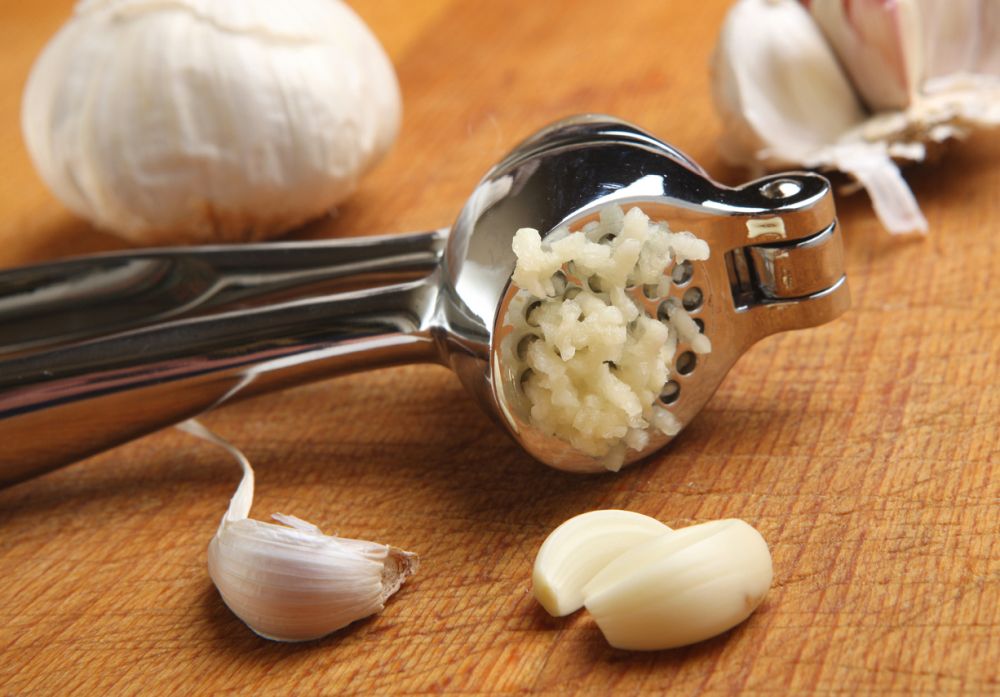
- Grind size: coarse
Using a garlic press is one of the simplest methods to grind coffee beans without a grinder. Just place the coffee beans between the two plates and push down with enough force to squash them.
There are several obvious drawbacks to using a garlic press:
- There’s not much room in a garlic press, so you must crush several batches of beans to make enough ground coffee for a single cup.
- You have no control over how uniform the ground coffee will be, and the grinds won’t have an even size at all. What you know for sure is that the grinds won’t be bigger than the garlic press holes.
- Garlic has a strong smell that lingers, just like with the spice grinder solution we discussed earlier. So if you continue using the garlic press for garlic, your coffee will smell and taste funky unless you thoroughly wash the garlic press with a vinegar and water mixture.
- The garlic press must be immediately cleaned after use, or it will be significantly harder to do this later.
While we don’t recommend using a garlic press to grind your coffee beans from an efficiency and consistency standpoint, it’s one of the better solutions if you need something quick and easy.
If you need a quality garlic press, have a look at OXO Good Grips Soft-Handled Garlic Press.
In the next section, check out the manual meat mincer solution.
3. Manual Meat Mincer
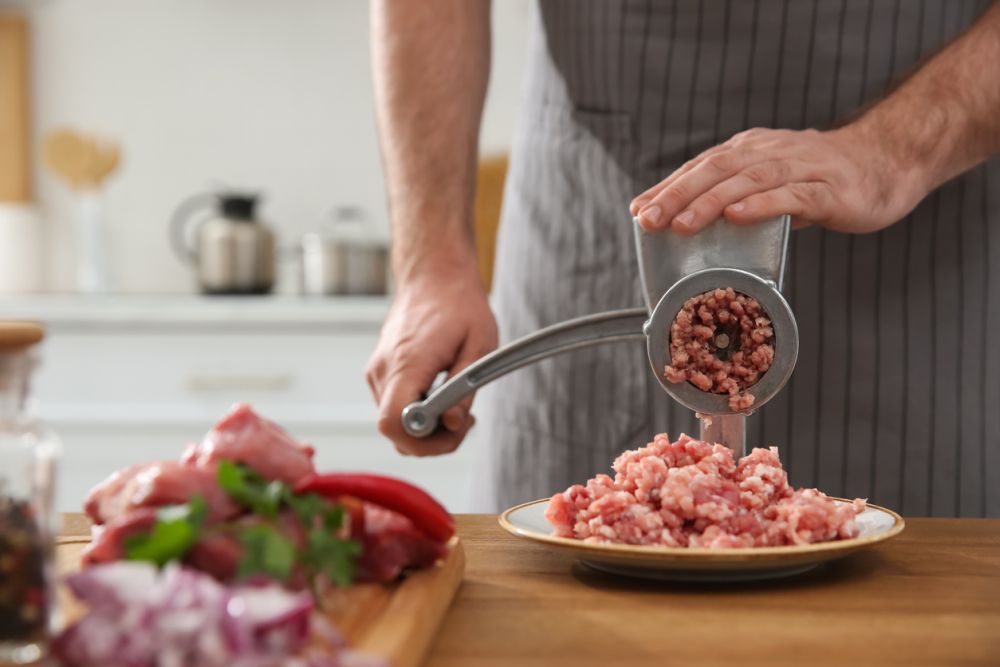
- Grind size: coarse
The manual meat mincer may seem like an odd choice for grinding coffee beans, but it does this job quite well.
Here’s what you need to know about grinding coffee beans without a grinder but with a manual meat mixer:
- To make it work, place the beans in the hopper and start cranking the handle. The beans will slowly make their way through the blades and come out as coarse grounds on the other side.
- The process requires time and effort, but it can be quite therapeutic.
- Since there’s no heat buildup, you won’t have to worry about your coffee losing any flavor or aroma.
- The only real downside to using a hand mincer is that it can be quite tiring, especially for large coffee amounts.
- Since a mincer doesn’t have any actual blades to do the job, the coffee grounds end up crushed in various shapes and sizes, so consistency isn’t its biggest strength.
- Hand mixers aren’t as popular nowadays since electric ones took their place. But we suggest avoiding electric hand mixers since their motors aren’t naturally accustomed to grinding hard foods like coffee beans, so the gadgets may overheat and break.
If you’re looking for a quality hand mincer, we recommend the Lurch Manual Meat Grinder – sturdy, built to last, and surprisingly affordable.
In the next section, check out the knife and chopping board solution.
4. Knife and Chopping Board
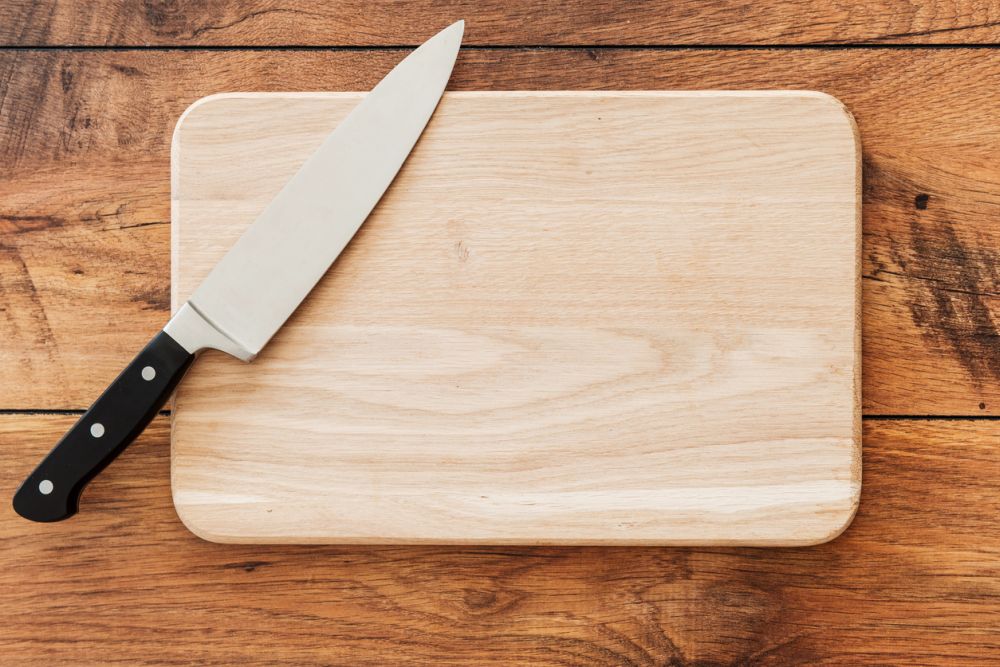
- Grind size: coarse
Using a knife and a chopping board is a great way to manually grind coffee beans without a grinder.
Here’s what you need to know about the knife and chopping board method:
- Despite what you might think, you won’t be using the knife to chop up the coffee beans into tiny pieces. Instead, you’ll use the chopping board and a butcher’s knife to crush them into coarse grounds.
- The best part about the knife and chopping board method is that it’s straightforward: place the beans on the chopping board and start crushing them with the flat side of the butcher’s knife over the board.
- The downside of this method is that you can’t control how fine or uniform your grounds will be; they can range anywhere from incredibly fine to very coarse. So it’s a messy solution since the beans tend to fly all over the place while trying to crush them.
- Working with a knife this way can be dangerous. There’s always the risk of accidentally cutting yourself, especially if the coffee beans are particularly oily, thus making the knife’s blade and handle very slippery.
- It can be quite time-consuming to grind a large number of coffee beans. We only recommend using this method if you’re in a bind and have no other alternative.
In the next section, check out the rolling pin and ziploc bag solution.
5. Rolling Pin and Ziploc Bag
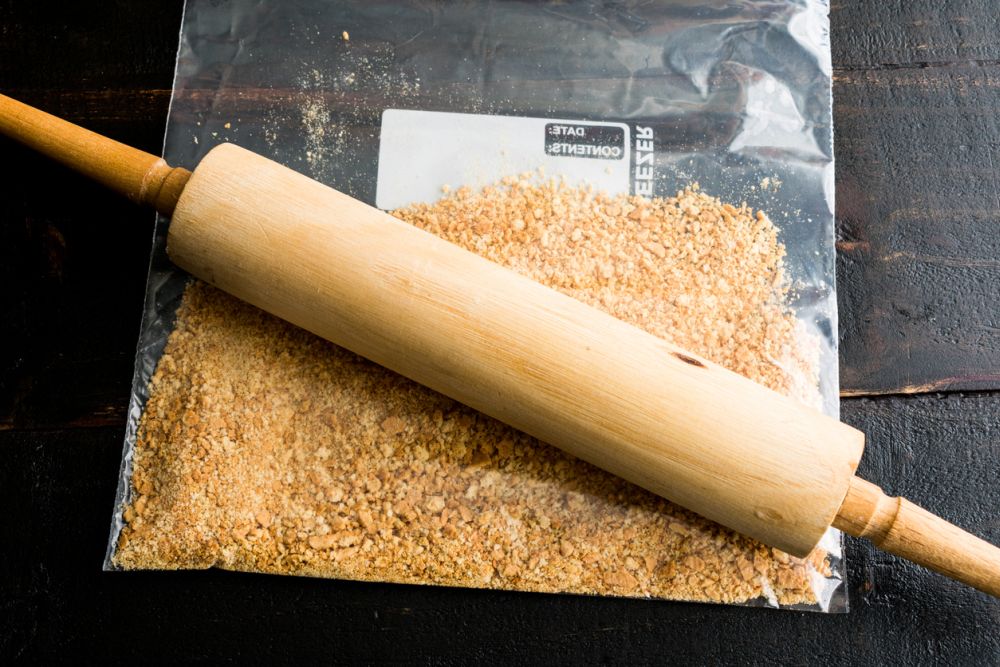
- Grind size: fine, medium, coarse
Using a rolling pin and a ziploc bag to grind coffee beans without a grinder can be a godsend.
Here’s what you need to know about the rolling pin and ziploc bag method:
- To make it happen, place the coffee beans in the bag and seal it shut. Take a rolling pin and roll over the bag to crush the beans until obtaining the desired grind size.
- The rolling pin and ziploc bag method produces fairly consistent grounds. But how fine the grind will be depends on how long you roll the pin over the beans.
- An advantage of using a rolling pin is that it’s a versatile tool, so you can use it to achieve any grind size.
- On the downside, there’s a good chance that you will accidentally damage the ziploc bag, so you will not be able to use it for anything else.
In the next section, check out the hammer or meat tenderizer and ziploc bag solution.
6. Hammer or Meat Tenderizer and Ziploc Bag
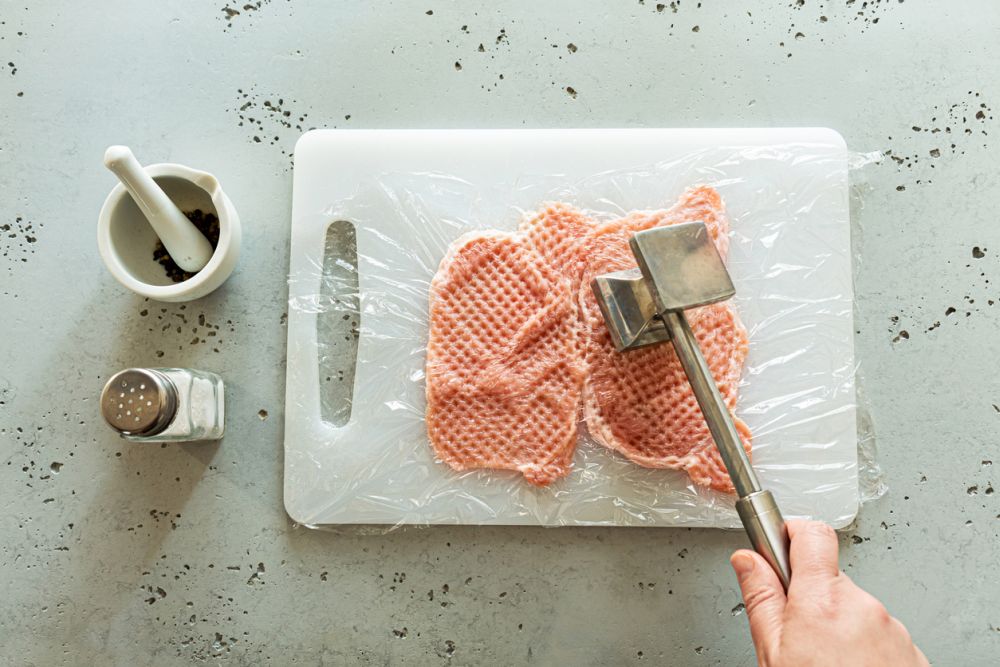
- Grind size: fine, medium
Using a hammer or a meat tenderizer and a ziploc bag is one of the quickest and most effective methods to grind coffee beans without a grinder.
Here’s what you need to know about the hammer/meat tenderizer and ziploc bag method:
- To make it happen, place the beans in the bag and seal it shut, ensuring there’s no air inside. Then start crushing the beans with the hammer until getting the wanted grind size.
- Like with the rolling pin method we discussed in the previous section, the hammer/meat tenderizer and ziploc bag solution produces fairly consistent grounds. But how fine the grounds will be depends on how long and how hard you smash them.
- This solution is pretty loud, which can become problematic when living in an apartment complex and needing to grind coffee early in the morning.
- Coffee beans can slip from under your hammer as you try hitting them, so you might miss them during smashing and waste your time in the process.
In short, we don’t recommend using this method unless you have no other option available. It’s simply not worth the time considering the small amount of ground coffee you obtain.
In the next section, check out the frying pan and ziploc bag solution.
7. Frying Pan and Ziploc Bag
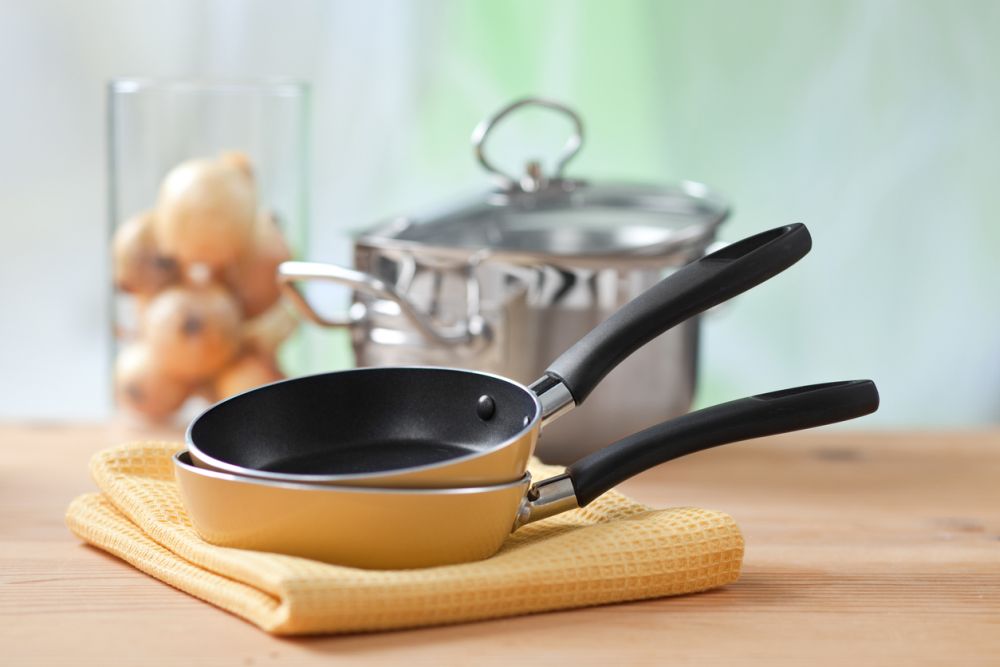
- Grind size: medium, coarse
If you have one of those old-fashioned cast-iron frying pans or skillets, you can use it to grind coffee beans without a grinder.
This method combines two methods we discussed in earlier sections, the one with the hammer and ziploc and the one with the knife and chopping board. Except that you’ll be using the underside of the pan or skillet as the smashing tool.
Here’s what you need to know about using a frying pan and a ziploc bag to grind coffee beans without a grinder:
- To do this, place your coffee beans inside the ziploc bag and seal it shut. Then press down on the bag with the frying pan or skillet.
- You need pressure to break the beans, so it’s not a gentle method. But it’s still better than using a hammer since there’s less chance of coffee beans slipping away because the underside of the pan has a significantly larger surface area than a hammer’s head.
- A downside is that this method can be quite time-consuming if you’re trying to grind a large number of coffee beans.
We recommend not trying this method on an expensive frying pan with high-tech coatings since it will end up damaged anyway.
In the next section, learn more about grinding coffee beans without a grinder.
FAQ
This section gives you simple answers to common questions about how to grind coffee beans without a grinder.
Can you grind coffee beans in a blender?
Yes, it’s possible to grind coffee beans in a blender, although not ideal. That’s because most blenders aren’t powerful enough to give you a consistent grind, so you’ll have coffee grounds that range from powdery fine to chunky coarse.
Is it better to grind coffee by hand?
If you prefer the authentic coffee-making experience, then yes, it’s better to grind coffee by hand. But it’s a time-consuming process that might not yield the expected results.
How do you grind coffee beans without a grinder?
You can grind coffee beans without a grinder using a blender, garlic press, food processor, immersion blender, mortar and pestle, manual meat mincer, a knife and a chopping board, or a ziploc bag and a smashing tool like a hammer or meat tenderizer.
The next and final section summarizes the entire article on how to grind coffee beans without a grinder.
Closing Thoughts
It’s amazing how many different ways are there to grind coffee beans without a grinder using just a bit of imagination.
While some of these methods can be time-consuming, most work pretty well. And you’ll be able to enjoy great-tasting coffee no matter how limited your resources are.
So, the next time you find yourself in a situation where there’s no coffee grinder around, just remember that there’s more than one way to skin a cat, or in this case, grind some coffee beans.
What’s your favorite way to grind coffee beans without a grinder? Let us know in the comments below!
Leave a Reply